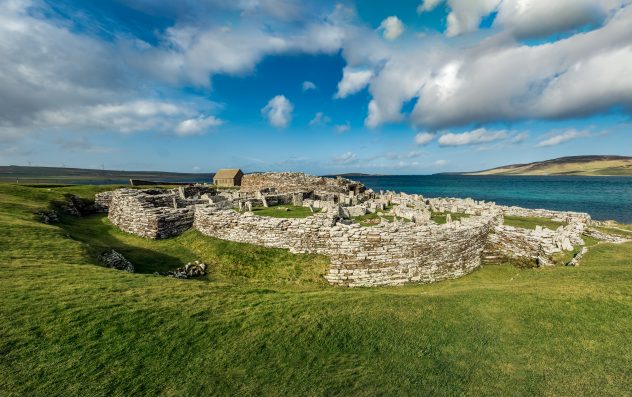Archaeologists In Northern Britain Uncovered A 5,000-Year-Old Tomb Containing 14 Skeletons That Is Now Being Referred To As A “Neolithic Feat Of Engineering”

In northern Britain, archaeologists have unearthed a 5,000-year-old tomb with fourteen skeletons buried inside it. The skeletons were a mix of men, women, and children. Two of them were positioned as if they were locked in an embrace.
The tomb consisted of stone walls and was accessed through a long passageway. It was first discovered in 1896 when a farmer’s son was digging around his family’s land in Orkney, a group of islands off the northeastern coast of Scotland.
He uncovered traces of walling, a stone mace head and ball, and the remains of eight individuals.
The findings were reported in a local newspaper, but the significance of the site went unrecognized, especially since the upper stones of the structure were used to construct a nearby building during the eighteenth and nineteenth centuries. The building was demolished about a decade ago.
In 2020, Dr. Hugo Anderson-Whymark, senior curator of prehistory at the National Museums Scotland, came across the newspaper clipping while doing archival research and was inspired to track down the tomb.
He led the excavation at the site, along with Vicki Cummings, a professor of neolithic archaeology at Cardiff University.
Over a period of three weeks, researchers dug into the ground of the flattened and overgrown site, slowly revealing the outline of a circular shape connected to a chamber containing six rooms. The tomb was about 49 feet in diameter and was built around 3000 B.C.
It has been referred to as a “Neolithic feat of engineering.” The workers who built the tomb had made the stone walls in such a way that they grew narrower as they reached the top of the structure.
“The tomb would’ve been an immense feature in the landscape when it was originally constructed, and the stonework inside would have been very impressive,” said Anderson-Whymark.

Aly – stock.adobe.com – illustrative purposes only
Additionally, researchers found a small motif carved on the back of one of the stones. It appears that the tomb’s entrance may have been blocked with a slab of stone that was moved when people needed to go in for ceremonies.
To find out whether the individuals in the tomb are related to each other, further research and DNA analysis need to be conducted.
If true crime defines your free time, this is for you: join Chip Chick’s True Crime Tribe
Sign up for Chip Chick’s newsletter and get stories like this delivered to your inbox.
More About:News